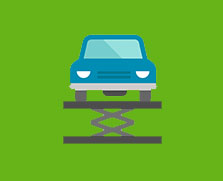This is why you should always idle your turbocharged engine after use.
RC of Brentwood is indeed wise to idle his turbocharged engine before shut-down. He will extend the life of the turbo, and save himself a lot of expense. Any turbocharged engined engine should be run at idle for about a minute after start up, to ensure that oil is circulating, before putting the engine on load. Similarly, before shutdown, a two minute idle may well save the life of the turbocharger.
Modern turbochargers, as used on cars, are likely to spin up to 150,000 rpm or more, and being almost perfectly balanced, take a long time to slow down. (I have seen a 6-litre marine engine shut down after a two minute idle, and found the turbocharger still to be rotating). Not only do the bearings require lubrication, but much of the oil supplied is there for cooling, as well as any water cooling that may be provided. Failure to keep the oil circulating and cooling the turbo will result in residual heat raising the temperature of the oil in the turbocharger to the point where it carbonises, and eventually obstructs the oil flow to the bearings when the engine is running.
With bearing clearances akin to those found in fuel injection equipment (the thickness of a human hair is about twenty times larger) coupled with high temperatures, lubrication is absolutely vital. Ultimately, more haste could well mean less speed.
Many thanks. This is, in fact, the advice I have been giving for 17 years. The biggest problem is carbonisation of the oil in the turbo bearings. But, as you say, it does depend on load. Very necessary to idle after towing or after a long ascent or when stopping for fuel on the motorway. But usually the last 10 minutes driving may be at low rpm and that can do the same job as letting the engine idle.
Answered by Honest John on




